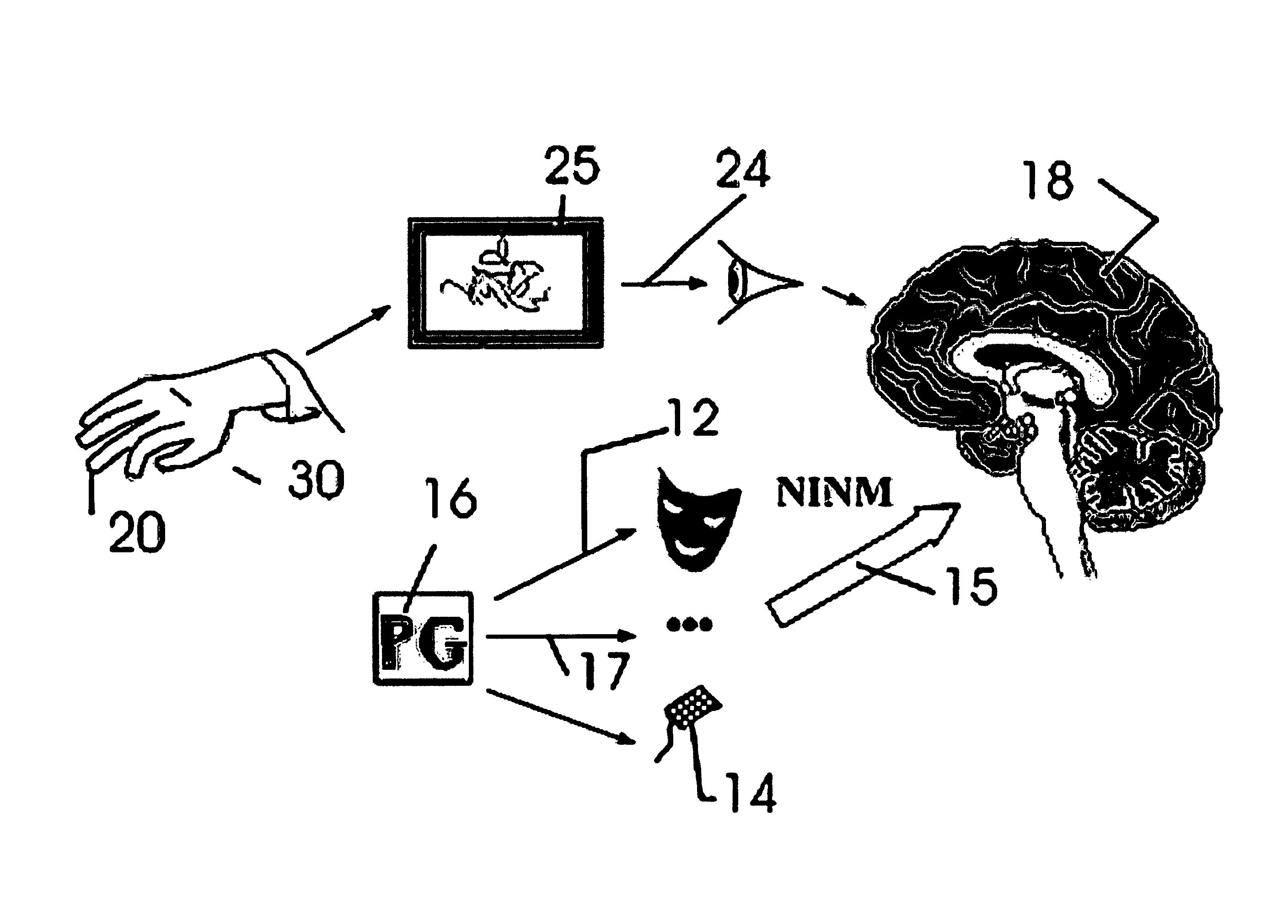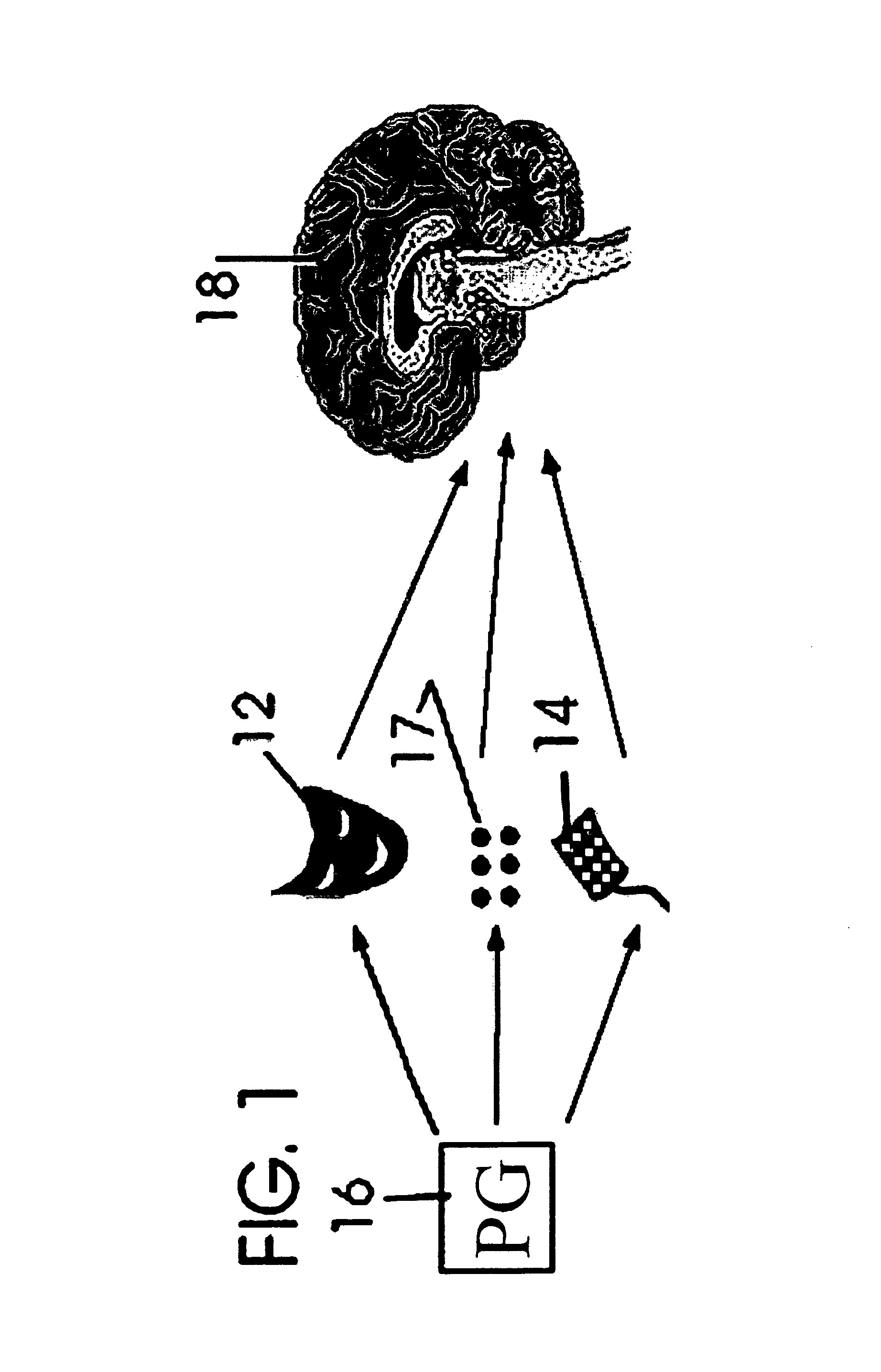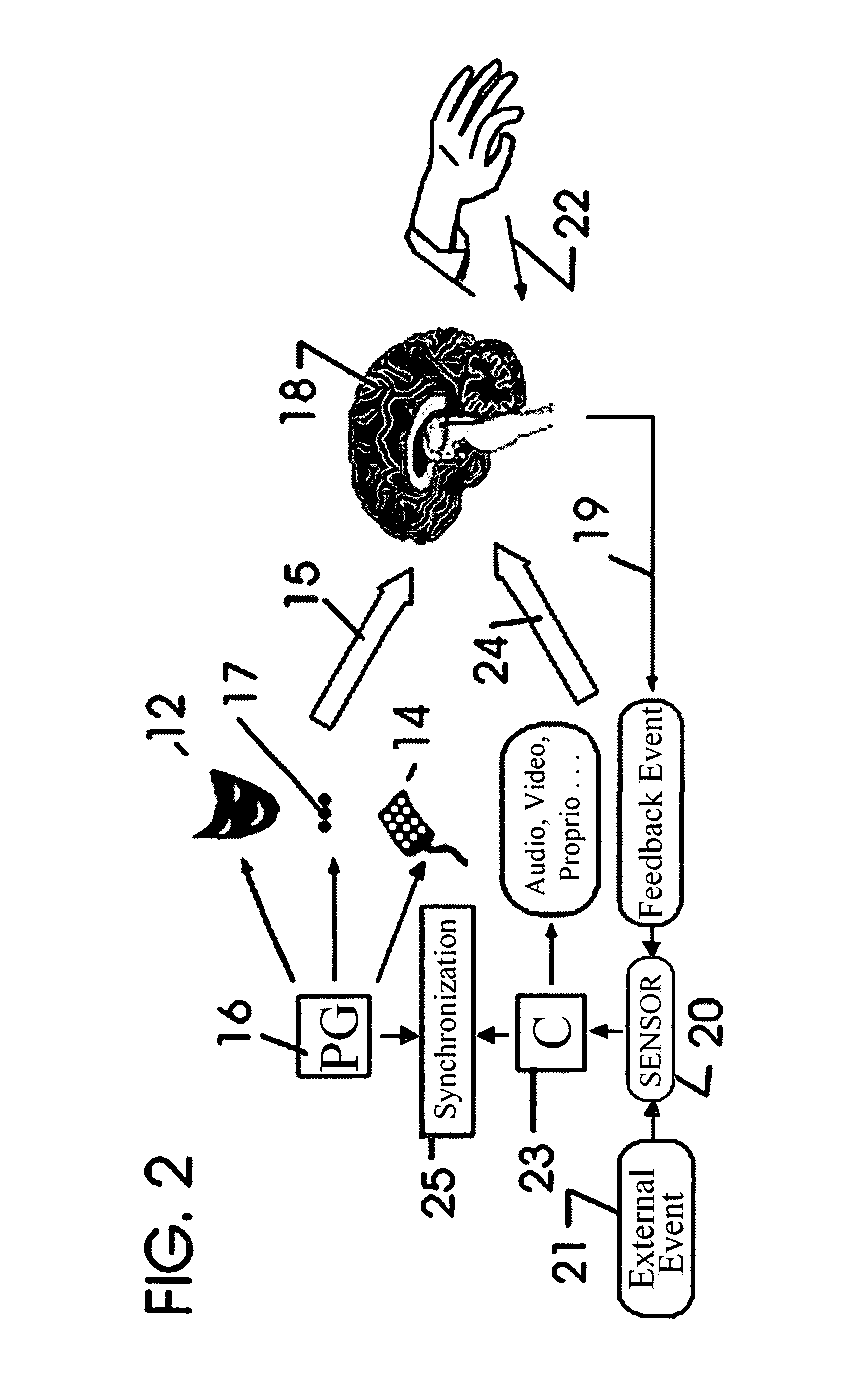Non-invasive neuromodulation (NINM) for rehabilitation of brain function
a neuromodulation and brain function technology, applied in the field of neurological impairment treatment, can solve the problems of time-consuming, difficult and exhausting for patients, risky invasive methods, and large experimental costs, and achieve the effect of improving cognition and mood
- Summary
- Abstract
- Description
- Claims
- Application Information
AI Technical Summary
Benefits of technology
Problems solved by technology
Method used
Image
Examples
Embodiment Construction
[0016]To expand on the discussion above, FIG. 1 illustrates an exemplary version of the invention wherein a facial mask 12 or tongue plate 14 bears a set of spatially arrayed electrical, mechanical, thermal, electromagnetic, or other stimulators 17, such as electrodes. These stimulators 17 preferably provide stimulation to the trigeminal nerve or subportions thereof, e.g., to the lingual nerve, and thereby stimulate the brain. Such stimulation is preferably non-invasive, that is, in distinction from brain-penetrating electrodes or other matter which penetrates or otherwise modifies the flesh, and is most preferably cutaneous (i.e., effected by stimulators 17 which simply rest in contact with the skin).
[0017]The facial mask 12 or tongue plate 14 may communicate with a pattern generator 16 to energize the stimulators to stimulate the brain 18. The pattern generator 16 may generate a regular or random stimulation pattern independent of the environment or other sensory input to, or resp...
PUM
 Login to View More
Login to View More Abstract
Description
Claims
Application Information
 Login to View More
Login to View More - R&D
- Intellectual Property
- Life Sciences
- Materials
- Tech Scout
- Unparalleled Data Quality
- Higher Quality Content
- 60% Fewer Hallucinations
Browse by: Latest US Patents, China's latest patents, Technical Efficacy Thesaurus, Application Domain, Technology Topic, Popular Technical Reports.
© 2025 PatSnap. All rights reserved.Legal|Privacy policy|Modern Slavery Act Transparency Statement|Sitemap|About US| Contact US: help@patsnap.com



